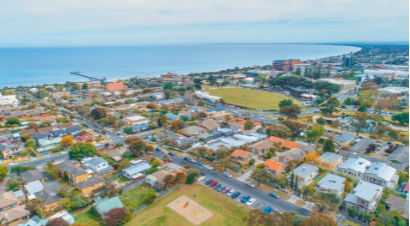12 Property Investment Strategies Every Melbourne Investor Should Know
A good property investment strategy can make or break your success in Melbourne’s competitive real estate market. With strong population growth, world-class infrastructure, and high rental demand, Melbourne remains one of Australia’s top locations for property investors.
But without the right approach, it’s easy to overpay, choose the wrong property type, or underestimate ongoing costs. That’s why having a clear strategy is essential. Mortgage brokers like LM Connect help property investors find the right loan structure to maximise cash flow and long-term returns. With expert guidance on financing, you can make informed investment decisions and build a strong property portfolio.
Whether you're new to property investing or building your portfolio, knowing the right property investment strategies is key to making smart decisions and growing your wealth. Let’s dive into the top strategies every Melbourne investor should know.
🏡 Need Home Loan help?
We've helped thousands of locals.
Just call us on 0423 713 362
Or visit our main website
Top 12 Property Investment Strategies in Melbourne
A successful property investment journey isn’t just about buying in a desirable location—it’s about understanding market trends, choosing the right property type, and managing financial decisions wisely. Here are 12 practical property investment strategies every Melbourne investor should know.
#1 Choose High-Growth Locations
Location is one of the biggest factors in capital growth and rental demand. Investing in suburbs with strong infrastructure, transport links, and job opportunities increases the chances of long-term appreciation.
Areas like Berwick, Glen Waverley, and Box Hill are experiencing steady property price growth due to ongoing development, strong school zones, and expanding commercial hubs.
To find high-growth properties, research vacancy rates, median house prices, and days on the market. Investing in suburbs with strong rental demand ensures better rental returns and long-term investment success.
#2 Buy Property Below Market Value
Finding a property priced below market value can instantly boost return on investment. Look for motivated sellers, off-market deals, or properties needing minor renovations. Auction clearance rates and recent property inspections can help you gauge a fair price.
A qualified building inspector can also identify potential renovation costs before purchase.
#3 Prioritise Positive Cash Flow
A property that generates rental income higher than mortgage repayments and expenses creates positive gearing. This helps cover ongoing costs like property management fees, maintenance costs, and council rates, reducing financial strain.
Suburbs with strong rental demand, such as Tarneit and Pakenham, offer properties with high rental returns and growth potential.
#4 Diversify Your Property Portfolio
Investing in different property types and locations can lower potential risks. Instead of buying multiple properties in one suburb, consider a mix of residential properties, commercial properties, or even property with subdivision potential.
Diversification helps protect against economic trends and shifts in rental prices.
#5 Leverage Government Incentives
Take advantage of investment property tax deductions and grants. In Victoria, investors benefit from negative gearing, capital gains tax discounts, and depreciation deductions.
First-time buyers may also be eligible for stamp duty exemptions and the First Home Owner Grant (FHOG), depending on their investment goals.
#6 Understand Property Cycles
The property market moves in cycles—boom, slowdown, slump, and recovery. Melbourne’s market has seen steady capital gain, but timing your investment is crucial.
Buying during a slump or slowdown often secures a competitive price, while selling during a boom maximises profits. Researching market trends and growth rates can help make informed investment decisions.
#7 Choose the Right Loan Structure
Selecting the right investment loan affects cash flow and tax benefits. An interest-only loan can reduce mortgage payments, while a principal and interest loan builds equity faster.
Working with mortgage brokers like LM Connect helps investors secure loans that align with their investment objectives and risk tolerance.
#8 Work with Experienced Professionals
An experienced property manager ensures your rental property is well-maintained and tenanted, reducing vacancy rates and ongoing repairs.
A real estate agent can help secure a competitive price, while financial planners provide expert investment property advice. Building a team of professionals can improve your property investment journey.
#9 Plan for Long-Term Capital Growth
Successful investors focus on long-term goals rather than short-term gains. Properties in Melbourne’s high-growth corridors—like Craigieburn and Clyde North—are expected to see strong appreciation over time.
Holding onto investment properties for extended periods of time allows you to benefit from long-term capital gains and increasing rental demand.
#10 Minimise Unnecessary Costs
Unplanned expenses can eat into rental returns. Keep track of building insurance, body corporate fees, and maintenance costs. Consider tax deductions for repair costs, advertising costs, and mortgage costs to maximise profits.
A well-managed property investment portfolio ensures consistent cash flow and reduces financial commitment.
#11 Choose the Right Property Type for Investment
Selecting the right property type should align with your investment goals.
- Apartments: Lower entry costs and strong rental demand, but body corporate fees apply.
- Townhouses: Good balance of affordability and capital growth, lower maintenance costs.
- Houses: Higher capital growth and more control over the property, but ongoing repairs and maintenance costs can be higher.
If your focus is rental income, apartments in areas with strong public transport links may be ideal. If you want long-term capital growth, houses in expanding suburbs are a better fit.
#12 Set a Realistic Budget and Investment Plan
A solid budget is key to making informed financial decisions. Investors should calculate return on investment (ROI) before purchasing a property:
ROI = (Annual rental income ÷ Purchase price) × 100
A good investment should have a rental yield above 4% to cover mortgage payments and property management fees.
Hidden Costs to Watch Out For:
- Stamp duty (varies by state)
- Conveyancing fees (~$1,500–$3,000)
- Building insurance
- Ongoing repairs and maintenance issues
Planning for these additional costs will prevent financial strain and help you make a financially sound investment. Applying these property investment strategies can help investors in Melbourne build a profitable portfolio and achieve financial independence. The key is to make informed investment decisions, manage risks, and work with professionals to maximise potential returns.
What Makes Melbourne an Ideal Location for Property Investment?
Melbourne remains one of Australia’s strongest real estate markets, offering a mix of capital growth, high rental demand, and strong infrastructure development. Investors and homebuyers alike are drawn to the city's economic stability, population growth, and desirable lifestyle.
- Strong Property Market Performance: As of January 2024, Melbourne’s median house price is $937,000, while median unit prices sit at $612,000 (CoreLogic). The city's property price growth is expected to continue, with forecasts suggesting a 5% increase in 2025, driven by low housing supply and strong buyer demand (SQM Research).
- High Rental Demand and Strong Returns: Melbourne’s rental vacancy rate has dropped to 1.1%, the lowest in years, pushing rental prices up by 12% year-on-year (Domain). Rental yields are improving, with houses averaging 3.5% and units around 4.3%, making Melbourne a profitable market for investors looking for positive cash flow properties.
- Population Growth and Infrastructure Investment: With Melbourne’s population projected to hit 6 million by 2026 (Australian Bureau of Statistics), demand for residential properties continues to rise. Major infrastructure projects like the Suburban Rail Loop ($50 billion) and Melbourne Metro Tunnel ($12 billion) are enhancing connectivity, making outer suburbs more attractive for property investment.
- Favourable Market Conditions for Homebuyers: Despite high property prices, first-time buyers benefit from stamp duty concessions, First Home Owner Grant (FHOG), and government-backed loans, making homeownership more achievable (State Revenue Office Victoria). Interest rates are stabilising, improving borrowing conditions in 2025.
How Mortgage Brokers Can Help
For investors and homebuyers, mortgage brokers like LM Connect can provide expert guidance on securing the best investment home loans, loan structure, and borrowing capacity to match financial goals. Working with a broker ensures you make informed investment decisions in Melbourne’s competitive real estate market.
🏡 Need Home Loan help?
We've helped thousands of locals.
Just call us on 0423 713 362
Or visit our main website
FAQs
What is the 1% rule in property investing?
The 1% rule suggests that a property’s monthly rental income should be at least 1% of the purchase price for it to be a good investment. In Melbourne, high property prices make this hard to achieve, so investors often focus on capital growth instead.
What is the 80/20 rule in property investment?
The 80/20 rule (Pareto Principle) states that 80% of investment success comes from 20% of key decisions. Choosing the right location, property type, and financial strategy can drive most of your returns.
What is the best property investment strategy?
The best strategy depends on your investment goals. Many investors in Melbourne focus on long-term capital growth, positive cash flow properties, or using negative gearing to reduce taxable income.
Is it worth buying an investment property in Melbourne?
Yes, Melbourne offers strong rental demand, capital growth, and government incentives for investors. However, it’s essential to research high-growth suburbs and choose a property that aligns with your financial goals.
What is a good rental yield in Melbourne?
A rental yield above 4% is generally considered good in Melbourne. Units often have higher yields than houses due to lower entry costs and strong rental demand.
What are the risks of property investment?
Potential risks include market downturns, high vacancy rates, and unexpected maintenance costs. Diversifying your property portfolio and having a cash flow buffer can help manage these risks.
How can mortgage brokers help property investors?
Mortgage brokers assist investors in finding the best loan structure, maximising borrowing capacity, and securing competitive interest rates. They help investors make informed financial decisions tailored to their property investment strategy.
Final Thoughts
Investing in Melbourne’s property market in 2025 offers great opportunities for capital growth, rental income, and long-term financial security. With the right property investment strategies, investors can build a strong portfolio and achieve their financial goals.
If you're planning to invest, LM Connect can help you find the best investment loan options tailored to your goals. Call us today at
0423 713 362 or visit
LM Connect for a free consultation and expert advice on your next property investment.




